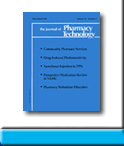 |
 |
Therapeutic Management of Accidental Epinephrine Injection
David B Cluck, Brian Odle, Somi Rikhye
To request full article click here.
Objective: To review the literature regarding therapeutic options for accidental epinephrine exposure via EpiPen (Mylan Specialty Inc.) autoinjector devices and to suggest a treatment algorithm based on the most common approaches found therein.
Data Sources: A literature search of MEDLINE (1950-March 2012) was conducted, using the search term accidental epinephrine injection in combination with the terms adrenaline, EpiPen, anaphylaxis, autoinjector, and treatment. Case reports, case series, and systematic reviews were evaluated for efficacy and safety data. In addition, the references of the reviewed articles were examined to identify additional reports or data.
Study Selection and Data Extraction: All English-language articles describing accidental exposure to epinephrine were identified. Our search included both pediatric and adult patient populations. Articles were excluded if the exposure to epinephrine was purposeful and the EpiPen described in the report was being used as intended or the outcome was not clear. Individual case reports were described in detail whereas case series and systematic reviews were included but were not described in detail. To our knowledge, there have been no clinical trials that describe or compare therapeutic options for accidental exposure to epinephrine.
Data Synthesis: Accidental exposure to epinephrine is an underreported phenomenon that could warrant medical attention. The importance of this issue has recently been emphasized with the legislative requirement of many schools to store epinephrine (EpiPen) autoinjector devices. The available therapeutic options can be divided into pharmacologic and nonpharmacologic categories. The most common pharmacologic options described in the literature include phentolamine, subcutaneous terbutaline, topical nitrates, and calcium channel blockers. Nonpharmacologic options include observation and/or warm water soaks. Treatment recommendations in our proposed algorithm were based solely on the available data that we describe in our review.
CONCLUSIONS: The literature did not provide clear guidance on the most appropriate management of accidental epinephrine injection. However, if pharmacologic therapy is necessary, phentolamine appears to be considered the most effective. Guidelines may be helpful in improving the management of accidental epinephrine injection, as well as in preventing unnecessary therapy.
J Pharm Technol 2013;29:123-9
To request full article click here.
|
|
|
||
|

